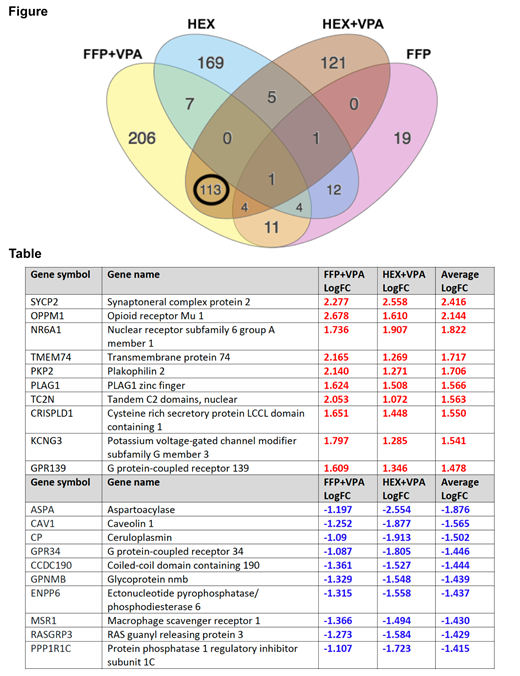Abstract
Introduction: Traumatic brain injury (TBI) results in widespread impairment of hemostasis, fibrinolysis, coagulation, endothelial function, and immune function. While damage control resuscitation (DCR) is a well-established treatment strategy for life-threatening hemorrhage, alternative treatment strategies should be applied to patients with concurrent TBI. Commonly used resuscitation fluids such as crystalloids or colloids have several disadvantages and may even be harmful when administered in large quantities. In contrast, pharmacologic agents, such as the histone deacetylase inhibitor valproic acid (VPA), have shown promising results in animal studies of TBI and hemorrhagic shock (HS). We previously showed that VPA not only decreases platelet hyper-activation and improves clot dynamics in in-vitro experiments, but also decreases transfusion requirements and improves survival in a porcine DCR model. In those animal models, VPA was administered in conjunction with fluid resuscitation such as fresh frozen plasma (FFP) or hextend (HEX). However, we wondered whether VPA itself induces cytoprotective properties that may underlie the restoration of hemostasis, endothelial function, and immune function that we observed in our models. This meta-analysis used computational biology to identify changes in the brain transcriptome due to VPA treatment that occurred independent of the chosen transfusion fluid.
Methods: Swine underwent TBI+HS, kept in shock for 2 hours, and resuscitated with normal saline (control), FFP, FFP+VPA, HEX, or HEX+VPA (n=5/group; all VPA doses 300 mg/kg). After 6 hours of observation, brain RNA was isolated and gene expression was analyzed using a microarray. Gene expression data were normalized to a normal saline control group. Transcriptomic data were imported into iPathwayGuide to identify significantly enriched genes and Gene Ontology (GO) terms. Genes were considered to be differentially expressed if they exhibited a log-fold change (logFC) > 1.0 (fold change > 2) and a p-value < 0.05. The differences in gene expression where then summarized in a Venn-diagram. GO terms identified the Biological Processes with the greatest modulation based on both significance and number of DE genes. GO term P-values were corrected using Elim-pruning.
Results: A total of 673 differentially expressed genes were identified. The FFP+VPA group exhibited 206 uniquely expressed genes and the HEX+VPA group 121. We found a total of 113 genes that were expressed in both the FFP+VPA and HEX+VPA groups, but not in the FFP and HEX only groups (Figure). Table 1 summarizes the 10 most up- and down-regulated genes that are only expressed in VPA groups (i.e. FFP+VPA and HEX+VPA). Unregulated genes specifically associated with VPA were involved in promotion of cell division, neurogenesis, cytoskeleton, and ion-channels, while down-regulated genes were involved in metalloproteins, neurodegenerative diseases, and cell cycle arrest. Significantly modulated Biological Processes identified by GO terms include: erythrocyte maturation, macrophage activation, microglial cell proliferation, signal transduction by P53, fibrinolysis and plasminogen activation, fibroblast migration, and neurogenesis.
Conclusion: Overall, this meta-analysis suggests that VPA altered the expression of approximately 1/6 th of all genes that were differentially expressed in our cohort. These genes are involved in a variety of biological processes such as cell division, neurogenesis, coagulation, cytoskeleton, and inflammation. These results suggest that VPA treatment may promote an environment that favors the restoration of hemostasis, production of new neurons, removal of damaged cells, and attenuation of inflammation. Such findings suggest that VPA treatment alone may be a promising therapeutic for the treatment of life-threatening hemorrhage and TBI.
No relevant conflicts of interest to declare.


This feature is available to Subscribers Only
Sign In or Create an Account Close Modal